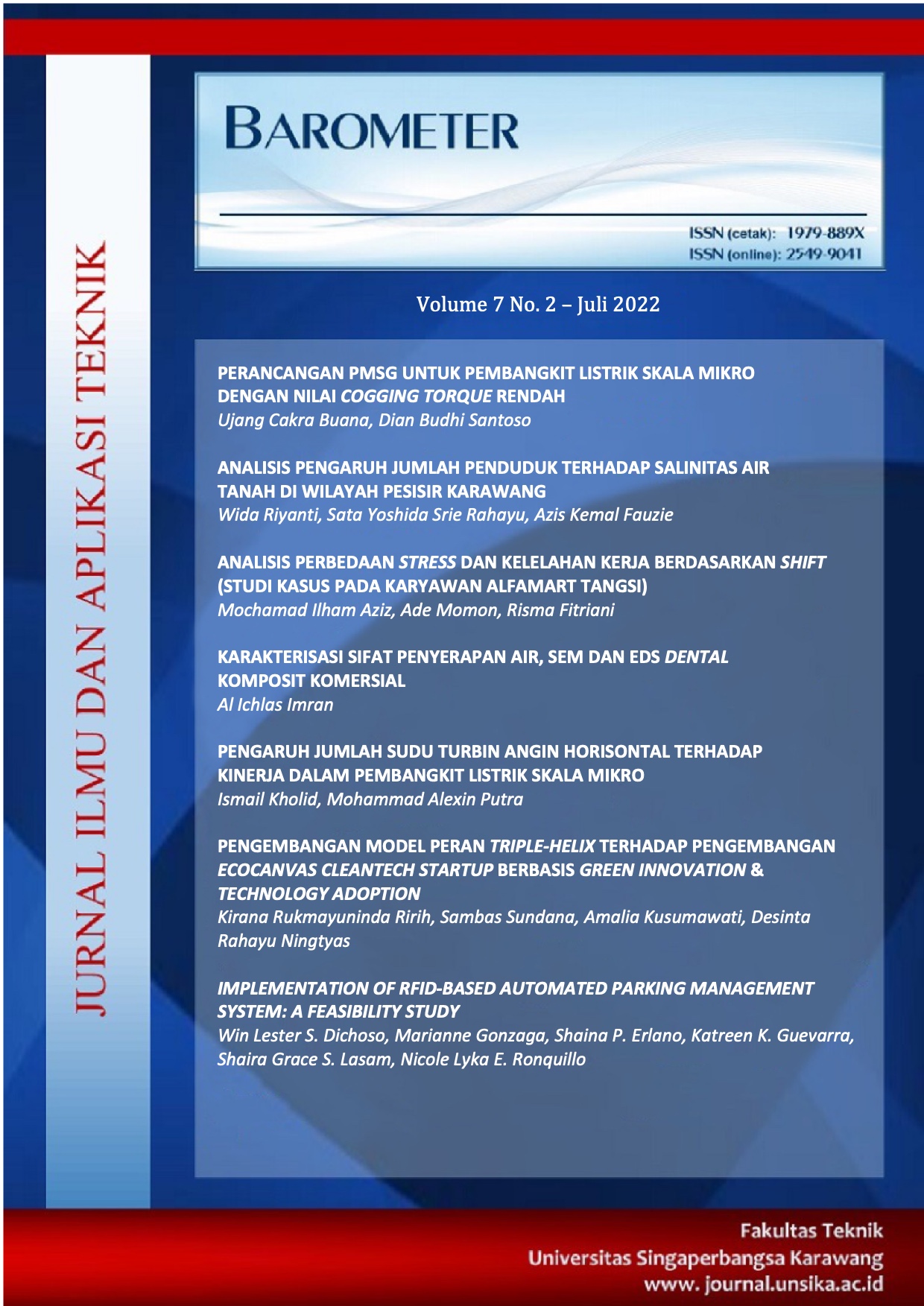IMPLEMENTATION OF RFID-BASED AUTOMATED PARKING MANAGEMENT SYSTEM: A FEASIBILITY STUDY
DOI:
https://doi.org/10.35261/barometer.v7i2.6764Abstrak
The difficulties of finding a parking spot in any business area are well-known to drivers. Parking tends to put them behind schedule owing to inefficient parking systems, making it much longer due to lost tickets, slow payment procedures, and insufficient parking information. To help lessen the delays caused by these problems, the researchers intend to integrate a technology-based solution in the three important parking procedures — the car entry and exit, the payment mechanism, and the location of parking slots — to significantly reduce the time spent handling these processes, with a particular emphasis on the management system’s ability to improve the parking experience. This study, titled Implementation of RFID-based Automated Parking Management System: A Project Feasibility, seeks to determine the feasibility of an RFID-based parking management system at Victory Mall and Market in Tanauan City, Batangas as its initial client. The project consists of two parts: (1) the system itself as the product and (2) the service that it will provide, featured by its cashless, contactless, and paperless transactions, making the overall service effective and efficient. The researchers conclude that the project is attainable, anticipating an initial service capacity of 929,888.07 parking hours with a 5% annual increase that will result in an average gross profit ratio of 68% per year. It is expected to have a three-year payback period for the total investments of its shareholders amounting to PHP 15,000,000.00. The assumed start of operation where the company caters to its first client is in June 2023.
Unduhan
Referensi
“Parking System Philippines.” https://elid.com.ph/parking-system-philippines/ (accessed Jul. 22, 2022).
A. & S. Adria, “Best solutions to manage mall parking lots – a&s Adria Magazine,” 2019. https://www.asadria.com/en/best-solutions-to-manage-mall-parking-lots/ (accessed Jul. 22, 2022).
“2018 Emerging Trends in Parking.” Accessed: Jul. 22, 2022. [Online]. Available: https://www.parking-mobility.org/wp-content/uploads/2019/01/IPMI-2018-Emerging-Trends-Report.pdf
M. S. Mazlan, I. R. A. Hamid, and H. Kamaludin, “Radio Frequency Identification (RFID) Based Car Parking System,” JOIV Int. J. Informatics Vis., vol. 2, no. 4–2, pp. 318–322, Sep. 2018, doi: 10.30630/JOIV.2.4-2.173.
Z. Pala and N. Inanc, “(PDF) Utilizing RFID for smart parking applications,” Research Gate, 2009. https://www.researchgate.net/publication/271465664_Utilizing_RFID_for_smart_parking_applications (accessed Jul. 22, 2022).
A. Gupta, A. Srivastava, R. Anand, and P. Chawla, “Smart Vehicle Parking Monitoring System using RFID,” Int. J. Innov. Technol. Explor. Eng., no. 8, pp. 2278–3075, 2019, doi: 10.35940/ijitee.I1035.0789S19.
M. Robertti, “What Are the Pros and Cons of RFID? - RFID JOURNAL.” https://www.rfidjournal.com/question/what-are-the-pros-and-cons-of-rfid (accessed Jul. 22, 2022).
“Republic Act No. 8792 | Official Gazette of the Republic of the Philippines.” https://www.officialgazette.gov.ph/2000/06/14/republic-act-no-8792-s-2000/ (accessed Jul. 22, 2022).
“eFOI - Electronic Freedom of Information - Request.” https://www.foi.gov.ph/requests/aglzfmVmb2ktcGhyHQsSB0NvbnRlbnQiEExUTy0wNDYxNDcwMTc3NjMM (accessed Jul. 22, 2022).
Development Academy of the Philippines., How to develop project feasibility studies Revised Edition. Development Academy of the Philippines, 2012.
T. Alexander Litman and by Todd Litman Victoria, “www.vtpi.org Info@vtpi.org 250-508-5150 Parking Management Strategies, Evaluation and Planning,” 2021, Accessed: Jul. 22, 2022. [Online]. Available: www.vtpi.org
“What is Market Share? Definition of Market Share, Market Share Meaning - The Economic Times.” https://economictimes.indiatimes.com/definition/market-share (accessed Jul. 22, 2022).
M. A. Muhammad, G. F. Nama, and M. H. Anbiya, “APLIKASI POSITION TRACKING VEHICLE BERBASIS INTELLIGENT TRANSPORTATION SYSTEM UNTUK SHUTTLE BUS UNIVERSITAS LAMPUNG,” Barometer, vol. 4, no. 2, pp. 208–212, Jul. 2019, doi: 10.35261/BAROMETER.V4I2.1907.
A. R. Demegillo, J. K. D. Dizon, K. B. A. Talon, F. F. Balahadia, and O. M. Lingo, “Real-time viewing automated parking system,” Proc. - 2016 IEEE Reg. 10 Symp. TENSYMP 2016, pp. 145–149, Jul. 2016, doi: 10.1109/TENCONSPRING.2016.7519394



